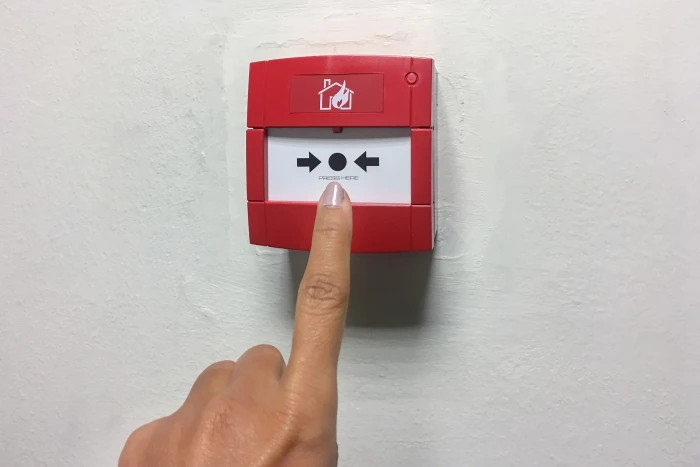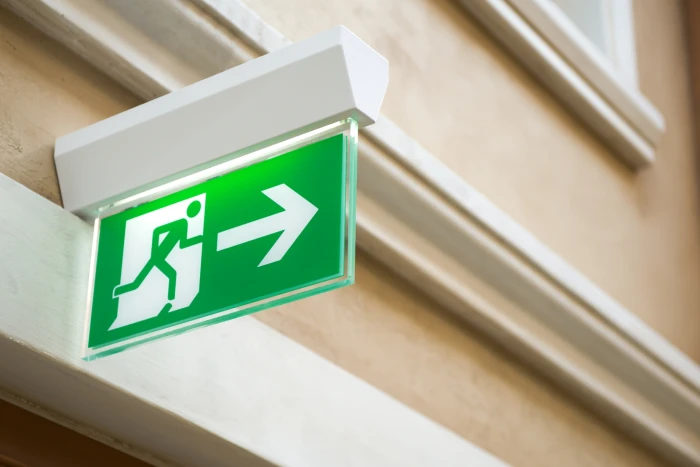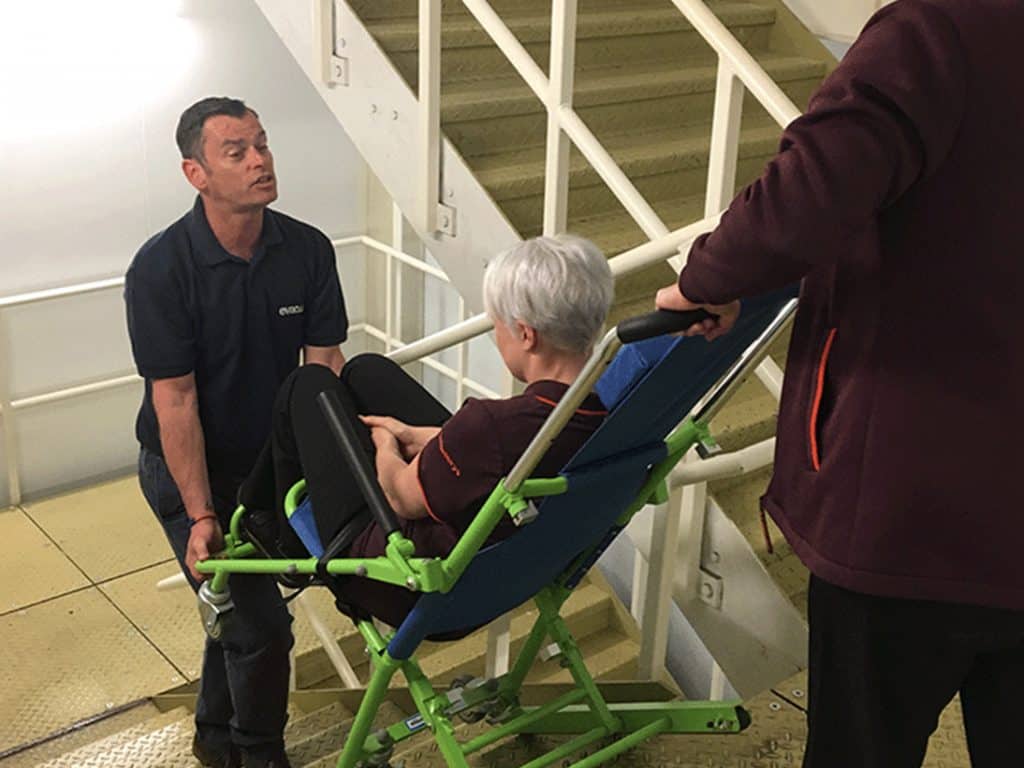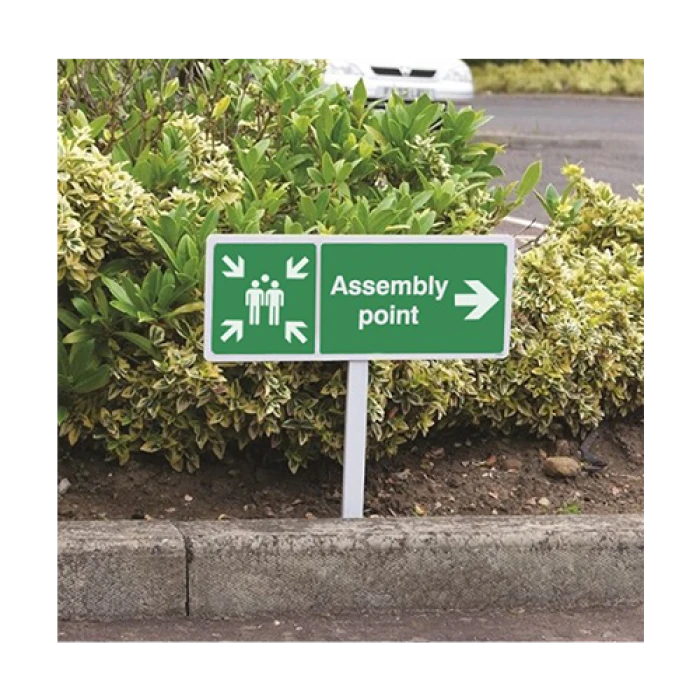
Need assistance?
Need Assistance? Call Us 0330 058 0631





















 Book a service
Book a service

22/07/2024 • by Lynsey B

Commercial fires can strike without warning, turning a regular day at work into a life-threatening situation. Knowing how to respond is critical. Whether you're an employer or employee, being prepared can save lives and reduce damage. In this blog, we'll walk you through the essential steps to take before, during, and after a commercial fire. From recognising early signs to executing a safe evacuation, we aim to equip you with practical knowledge. Let's ensure that if a fire occurs, you’ll know exactly what to do.
Workplace fires can strike without warning, posing a serious threat to lives and property. In such critical moments, knowing the right steps to take can make all the difference. Proper preparation and quick action can prevent injuries, save lives, and minimise damage to the building and its contents.
Here’s a straightforward guide on what to do if there’s a fire at your workplace. By following these essential steps, you can help ensure the safety of yourself and your colleagues. This guide will cover how to recognise early signs of a fire, initiate an evacuation, use fire extinguishers effectively, and communicate with emergency services. Being prepared and knowing these steps will not only keep you safe but also contribute to a swift and organised response during a fire emergency. Let's delve into the actions you should take to protect yourself and others when a fire occurs at your workplace.
The first step in responding to a workplace fire is to raise the alarm. This is crucial for alerting everyone in the building to the danger and initiating an immediate evacuation. When a fire is detected, it's essential to act swiftly and decisively. Raising the alarm involves triggering the fire alarm system, which may include pulling a manual fire alarm pull station, pressing a designated call point button, or using the building's intercom system to broadcast an emergency message.

Most workplaces have fire alarms strategically placed near exits, hallways, and common areas. Familiarise yourself with these locations. When you notice signs of a fire, such as smoke or flames, head straight to the nearest fire alarm. Pull the alarm handle firmly. This action triggers the alarm system, notifying everyone in the building to evacuate. Raising the alarm quickly can prevent injuries and save lives by giving people more time to evacuate.
While the fire alarm will alert most people, it's essential to inform those nearby verbally, especially if the alarm system fails or isn't immediately noticeable. Shout "Fire!" to grab their attention and ensure they understand the urgency. Clear communication helps everyone recognise the need to evacuate quickly and safely.
Once the alarm is raised, the next crucial step is to evacuate the building. This action is vital because it helps protect everyone from the dangers posed by fire, smoke, and toxic fumes. A prompt and orderly evacuation ensures that all individuals can exit the building safely and efficiently.

Your workplace should have a clear and practised evacuation plan to ensure the safety of all employees in the event of an emergency. This plan serves as a vital guide, outlining the necessary steps to take when a fire or other dangerous situation arises. It’s important to familiarise yourself with the location of all exits throughout the building. Take note of both main and emergency exits, as well as any accessible routes that may be less obvious. Knowing the layout can save crucial time during an evacuation.
In addition to exit locations, understanding the fastest route to safety is essential. During a fire, smoke and flames can obstruct pathways, making it vital to identify alternative exits ahead of time. By practising these routes, you can react swiftly and confidently if an emergency occurs.
Importantly, always avoid using elevators during a fire. Elevators can fail, become stuck, or malfunction due to power outages, which could trap occupants inside. In contrast, stairways are designed for emergency use, allowing for safe and effective evacuation.
During evacuation, it is crucial to stay calm and move quickly but safely. Remaining composed helps prevent panic, which can lead to chaos and confusion. Panic can not only slow down the evacuation process but also increase the risk of accidents. Encourage those around you to remain calm as well, as collective composure can facilitate a more organised exit.
It is important not to run during an evacuation. Running can lead to slips, trips, and falls, especially in crowded or smoke-filled environments. Instead, maintain a brisk yet steady pace. This approach allows you to navigate through the building effectively without compromising your safety or that of others.
If the smoke is thick, remember that staying low to the ground is essential. Smoke tends to rise, meaning the air is clearer and more breathable closer to the floor. By crouching or crawling, you can minimise exposure to harmful smoke and toxic fumes. This strategy not only aids in breathing but also improves visibility, making it easier to find your way to an exit.
If you find yourself in a situation with heavy smoke, covering your mouth and nose with a cloth can further reduce smoke inhalation. A wet cloth is particularly effective, as it can filter out some of the harmful particles and provide a little relief from the heat. This simple action can make a significant difference in maintaining your respiratory health during an emergency.

If you encounter colleagues who are unaware of the fire or struggling to evacuate, it’s essential to assist them as long as it doesn’t put you at risk. Helping others during an emergency reflects teamwork and a commitment to safety. Quickly assessing the situation is important; if it seems safe, approach your colleague calmly to inform them of the danger.
When guiding them to the nearest exit, communicate clearly and encourage them to move quickly. Maintaining a steady pace can prevent panic and ensure a smoother evacuation. If the person is unsure of the best route, point out the nearest exit signs to help them navigate more effectively.
In cases where someone is disabled or injured, your assistance is even more critical. Offering your support can involve providing physical help or guiding them slowly and steadily to safety. If a colleague uses mobility aids, help them manage their equipment as needed.
If your workplace is equipped with designated evacuation equipment, such as wheelchairs or rescue sleds, utilise these tools to aid those who cannot move quickly. Ensure you’re familiar with how to use this equipment ahead of time so that you can respond promptly during an emergency.
While it’s important to help others, always prioritise your safety. If conditions worsen or the situation becomes too dangerous, retreat to safety and inform emergency personnel about any individuals still inside. Your prompt actions can not only save lives but also foster a supportive environment where everyone looks out for one another during critical moments.
As you leave, it's crucial to close doors behind you. This simple action can play a significant role in slowing the spread of fire and smoke throughout the building. When a fire breaks out, flames and smoke travel rapidly, and even small barriers can hinder their progress. Closing doors can effectively contain the fire to one area, giving occupants more time to evacuate safely.
It's essential to remember not to lock the doors as you close them. Locking doors could impede the efforts of emergency responders who may need quick access to various areas of the building. In a fire situation, every second counts, and ensuring that first responders can enter quickly is vital for managing the situation effectively.
Furthermore, closing doors helps create barriers that protect other parts of the building from damage. This containment can limit the extent of destruction and may help preserve vital areas, such as rooms with critical equipment or important documents. By slowing down the fire's spread, closed doors can also reduce the amount of smoke that seeps into other areas, providing a clearer environment for those evacuating and for emergency personnel working to extinguish the fire.
Do not waste time gathering personal belongings during an emergency evacuation. While it might be tempting to grab essential items, remember that your safety and the safety of others take precedence over material possessions. In moments of crisis, prioritising quick action can significantly increase your chances of escaping unharmed.
When a fire alarm sounds, every second counts. The longer you delay collecting personal items, the greater the risk of exposure to smoke, flames, or other dangers. Fires can spread rapidly, and conditions can worsen in an instant. Focusing on getting out of the building quickly is vital to ensure not only your own safety but also the safety of your colleagues who may be counting on you for guidance.
Once you have evacuated the building, the next critical step is to proceed to the designated assembly point. This area is established to ensure the safety and accountability of everyone during an emergency.
The assembly point serves as a safe gathering location away from the building. It allows everyone to regroup and ensures that all personnel are accounted for after the evacuation. Being in a centralised location helps emergency responders manage the situation effectively. It also provides a clear area for medical assistance if needed.

As you move towards the assembly point, stick to the designated evacuation routes. These routes are designed to guide everyone safely and efficiently out of the building. Avoid shortcuts or areas that may still be unsafe due to smoke or fire hazards. Staying on the established paths ensures that you are navigating the safest way possible.
While making your way to the assembly point, encourage others to remain calm. A composed demeanour can reduce anxiety and help facilitate an orderly evacuation. If you see anyone who may need assistance, offer help, especially to those who are injured or unsure of where to go. However, ensure that your own safety is not compromised while helping others.
Once you arrive at the assembly point, stay there and await further instructions from your supervisor or emergency personnel. This is important for ensuring that everyone is accounted for and that the situation is assessed accurately. Do not leave the assembly point until you are given the all-clear or instructed otherwise.
If you notice that someone is missing or unaccounted for, inform the emergency responders as soon as possible. Provide them with as much information as you can, such as the last known location of the individual or any circumstances surrounding their absence. This information is critical for rescue efforts.
In conclusion, knowing how to respond effectively during a commercial fire can make all the difference in ensuring safety and minimising damage. Fires can occur unexpectedly, and being prepared is essential for everyone—employers and employees alike. By following the steps outlined in this guide, from raising the alarm to evacuating swiftly and reaching the assembly point, you can protect yourself and your colleagues.
Remember, your safety comes first, so focus on evacuating quickly and assisting others when it is safe to do so. Familiarising yourself with your workplace’s evacuation plan, understanding the importance of closing doors, and not gathering personal belongings can all contribute to a more organised and effective response. Let’s commit to being proactive and prepared, so that if a fire does occur, you’ll know exactly what to do. Stay safe!
29/08/2025 • by Megan Downing
We use cookies to enhance your site experience. Choose your preferences below.
